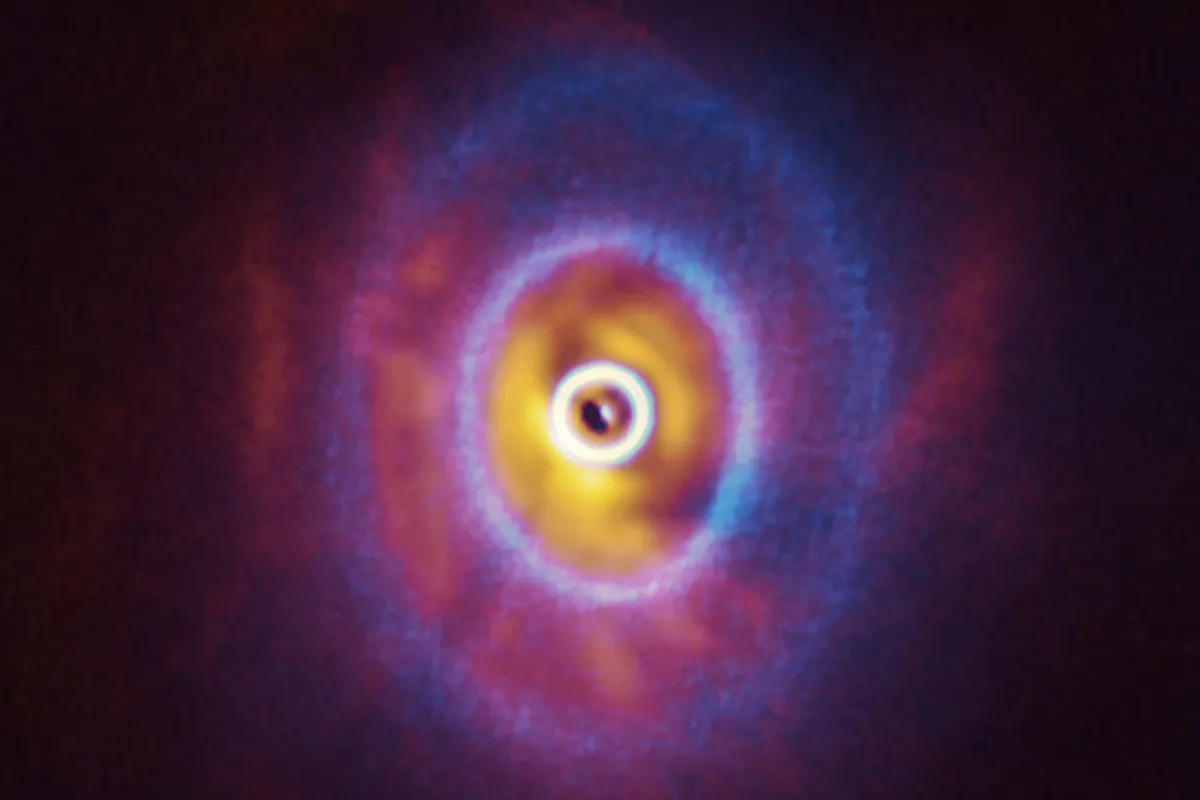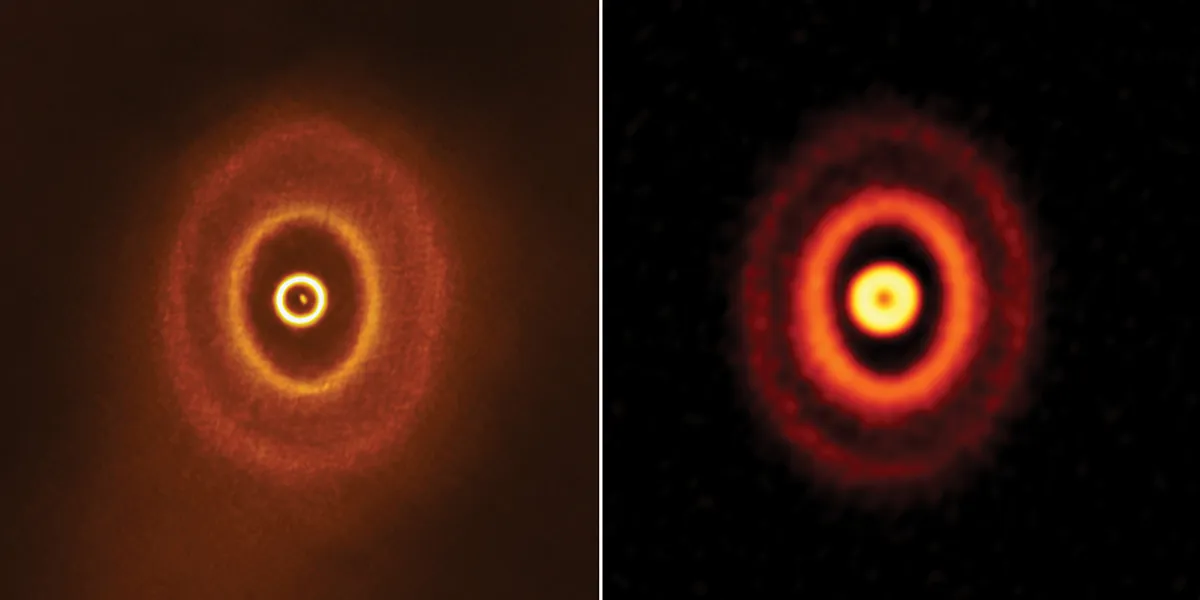
Astronomers have discovered a triple star system surrounded by a planetary disc with misaligned rings, potentially providing the first ever piece of evidence that groups of stars can tear apart planet-forming discs leaving them warped and tilted.
After a star has formed, there is often a disc of cosmic dust and left-over debris orbiting the star, known as a protoplanetary disc.Out of these discs, dust and material can coalesce to form planets orbiting that star.
Our own Solar System, for example, has planets orbiting the Sun on a relatively flat plane, but this is not always the case.
Studying a young star system that contains three stars, called GW Orionis, astronomers discovered three separate dusty rings with different orientations in the planet-forming disc.
These rings are located about 46, 185 and 340 AU from the star, where 1 AU is the average distance between Earth and the Sun.
The outermost ring is the largest ever observed in planet-forming discs. The innermost ring is very misaligned, relative to the outer rings and the three stars.

The system has been observed on two separate occasions: first in 2017 by a team led by Jiaqing Bi of the University of Victoria, Canada, and more recently by a team led by Stefan Kraus from the University of Exeter in the UK.
Both teams used the Atacama Large Millimeter/submillimeter Array in Chile to make their observations.
Kraus and his team consider it a strong possibility that the gravitational pulls of the three different stars in the system have warped and broken up the discs. But, says Bi's team, there may be another reason for the misalignment.
“Our simulations show that the gravitational pull from the triple stars alone cannot explain the observed large misalignment. We think that the presence of a planet between these rings is needed to explain why the disk was torn apart,” says team member Nienke van der Marel of the University of Victoria.
“This planet has likely carved a dust gap and broken the disk at the location of the current inner and outer rings."
Kraus also considers the theory a possibility: “The inner ring contains enough dust to build 30 Earths, which is sufficient for a planet to form in the ring,” he says.
If follow-up observations could discover this planet, it would be the first time a planet orbiting three stars has ever been observed.
Image stats
Observatory Atacama Large Millimeter/submillimeter Array
Release date 3 September 2020
Image credit ESO/Exeter/Kraus et al., ALMA (ESO/NAOJ/NRAO)
Read more about this story via the National Radio Astronomy Observatory website.
Iain Todd is BBC Sky at Night Magazine's Staff Writer.
